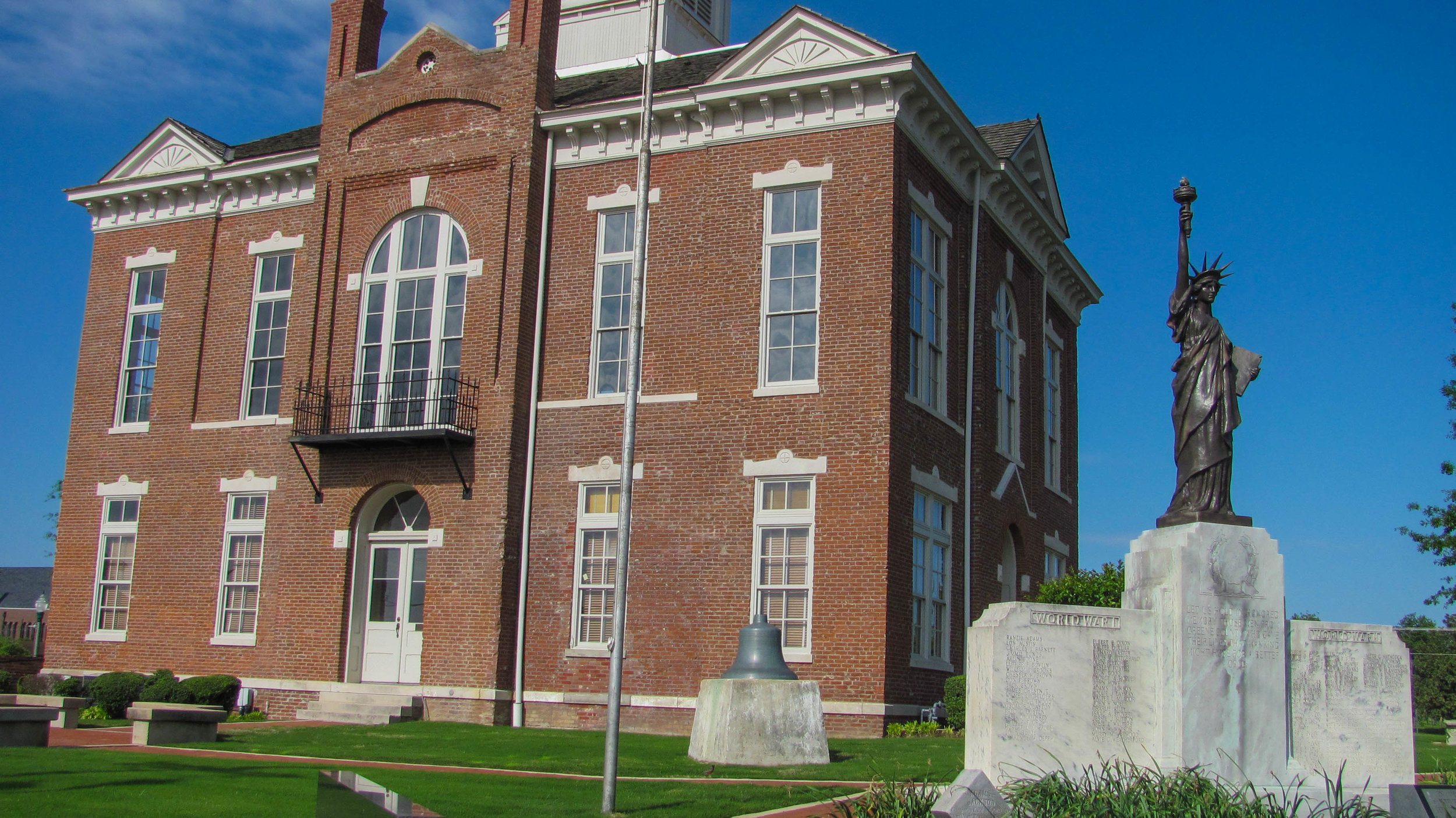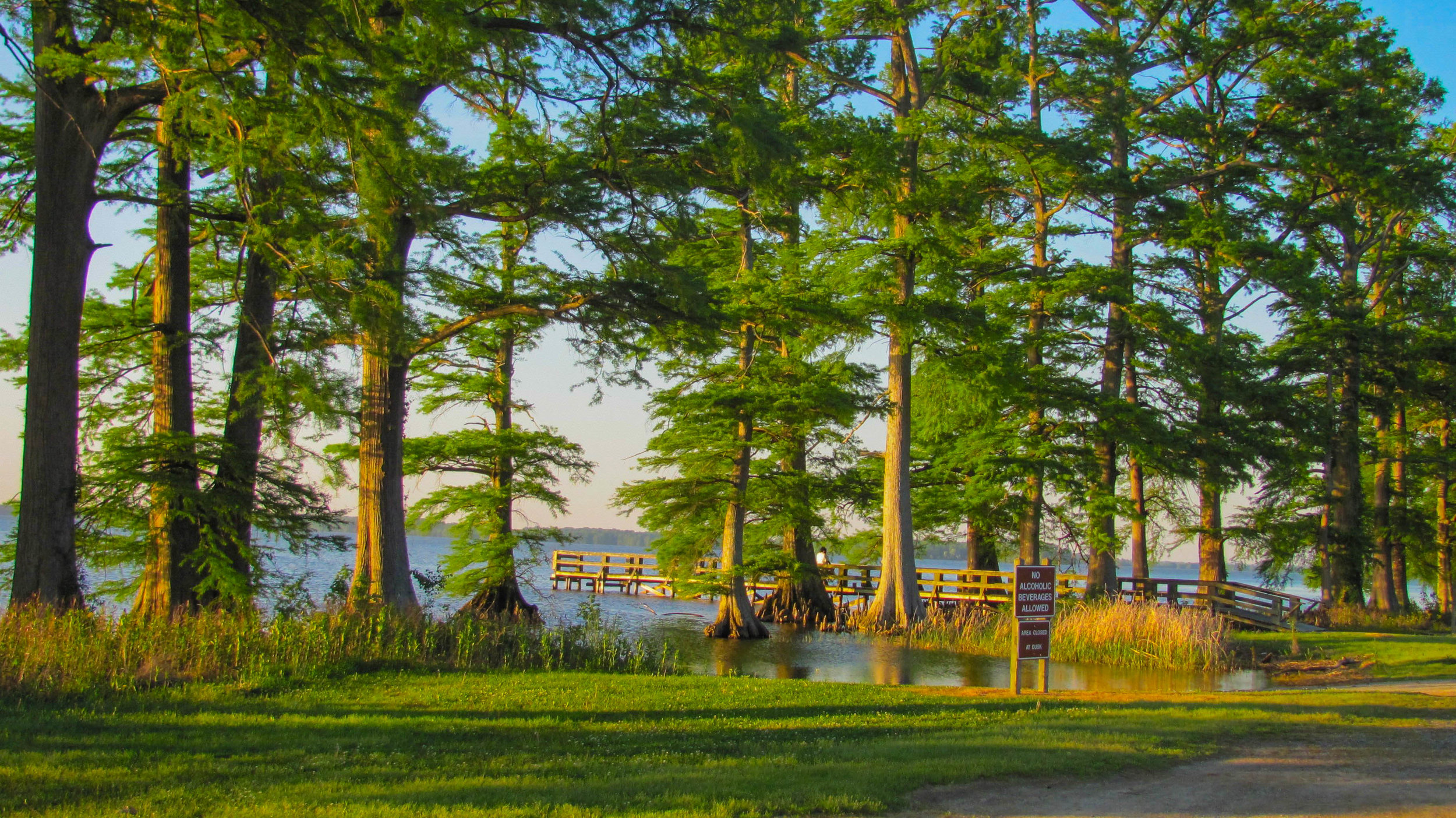4343 TN-157
Union City, Tennessee
731-538-2481
Reelfoot Lake is located in the northwest corner of Tennessee and is Tennessee’s largest natural lake. A large depression was formed in the region during the New Madrid earthquakes during the winter of 1811 and 1812. What was once woodlands became a partially submerged forest encompassing 25,000 acres, 15,000 of which is a shallow lake. Legend has it that the lake was named for a Chickasaw warrior chief born with a deformed foot causing him to "reel" as he walked. According to the legend, the chief incurred the wrath of the gods when he kidnapped a Choctaw princess, and took her as his bride. Reelfoot, his princess, and tribe were eternally entombed at the bottom of Reelfoot Lake when the gods created the depression into which the waters of the Mississippi River flowed.
The formation of Reelfoot Lake created a valuable wetland area which became a haven for many wildlife species and harbors almost every kind of mid-American shore and wading bird. Reelfoot National Wildlife Refuge is located on the northern portion of Reelfoot Lake and was established in 1941 by the Federal government in cooperation with the State of Tennessee. Additional land purchases extended the refuge into Kentucky to its present size of 10,428 acres. Due to the proximity to the Mississippi River the refuge is a major stopover point and wintering area for waterfowl of the Mississippi Flyway.
Reelfoot NWR is divided into two management units, Grassy Island and Long Point. The primary access to the Grassy Island Unit is the 2 1/2 mile auto tour located north of the Visitor’s Center. Open year-round the auto tour gives visitors a unique opportunity to observe a remnant of bottomland hardwoods from the comfort of a vehicle. The auto tour terminates at a boat ramp and a boardwalk with an observation deck where visitors can view the scenic lake. The boardwalk has rails that extend to the up to the observation tower. Parking is provided along the way for the 1/2 mile Grassy Island Hiking Trail that is barrier free and open year-round. This hiking trail is about half way between the information kiosk that marks the border of the refuge and the parking lot. The bottomland hardwood forest area is closed from November 15 through March 15. The waters of the refuge are closed from November 15 through January 31.
The Long Point unit is the refuge's primary waterfowl management area where farmers plant crops and leave behind a percentage and natural vegetation are managed to attract waterfowl. Ten miles of gravel roads are open to the public use from March 16 to November 14. During the winter this area is closed for use as a waterfowl sanctuary except for a parking area and observation tower on the main entrance road. The observation tower is great for waterfowl viewing. The Refuge Visitor’s Center contains numerous natural and historical exhibits related to the Reelfoot Lake area. Outside the Visitors Center is the backyard living exhibit that contains a 1/2 mile walking trail and demonstrates how visitors might attract wildlife to their own backyards. Information about the refuge and surrounding area can be found at this facility.
The natural aspects of Reelfoot Lake NWR change throughout the seasons. Here are some of the highlights:
Bird Watching
Reelfoot National Wildlife Refuge is one of the major wintering, migrating and production areas for waterfowl in the southeast. Beginning in October bald eagles begin to arrive and are plentiful by Thanksgiving. The Grassy Island walking trail offers excellent viewing of waterfowl, and songbirds. October also is the month that ducks, primarily Mallards, Gadwall, American Widgeon and Ringneck ducks, begin arriving. By January waterfowl concentrations reach their peak with up to 400,000 ducks and 150,000 geese making Reelfoot Lake their temporary home. By February the Bald Eagle population reaches its peak. Reelfoot Lake NWR gives free guided eagle and wildlife tours from December through February. In March the bald eagles begin their northward migration and are replaced by Ospreys who are returning from South America and by large numbers of Northern Shovelers and Blue-winged Teal arriving on their northward migration. The lakes resident Wood Ducks return and begin their nesting activity. In April shorebirds and ducks are abundant in the refuge’s moist soil units and temporary wetlands. May is an excellent time for birders at Reelfoot Lake. Up to 240 species have been documented. Songbirds are abundant, especially warblers and Mississippi kites. In June herons, egrets and cormorants can be observed fishing in shallow water. In September Marsh Hawks can be observed near the refuge’s headquarters in September and in October large numbers of Gadwall and American Widgeon begin arriving. The U.S. Fish and Wildlife Service maintains a checklist for birds that can be seen in the refuge.
Fishing and Hunting
For anglers February is a good month for cold weather crappie fishing. The Grassy Island Unit opens for fishing on February first. In March the Long Point Unit and Lake Isom open to sport fishing on the fifteenth. The spring turkey hunt is conducted on the first weekend in April. In May bluegill fishing is at its peak. The annual youth fishing rodeo held at maintenance shop pond in conjunction with National Fishing Week in June. The Refuge squirrel season opens on the fourth Saturday of August. Fall fishing for "stripes," crappie, and bass begins in September. The archery deer season begins on October 1 and the raccoon season begins off during the last two weeks of the month.
Other Wildlife
Reelfoot Lake’s wildflowers begin blooming in April. May is the month for frog listening, especially spring peepers and tree frogs, and for seeing deer and wild turkey in the early morning and late evening. Deer fawns become visible in June. June is also the month that emergent and floating aquatic vegetation begin blooming. In July mosquitoes and deerflies swarm the bottomland forest.
Visiting Reelfoot National Wildlife Refuge
The Visitor Center is open daily from 8 am - 4 pm except for Federal holidays.
The bottomland hardwood forest area of the Grassy Island Unit is closed from November 15 through March 15.
The land and water areas of the Long Point Unit are closed from November 15 through March 15 except for the observation tower.
The waters of the Grassy Island units are are closed from November 15 through January 31.
There is no charge to visit Reelfoot National Wildlife Refuge.
Directions: The Reelfoot National Wildlife Refuge is located on the northeastern side of Reelfoot Lake. The Refuge Headquarters is located approximately 15 miles southwest of Union City, Tennessee. From Union City take AR-22 north approximately 15 miles and turn right on AR-157. The Refuge Headquarters is located exactly 1 mile on left.
Explore the Lake County, Union City, and Obion County areas
Reelfoot National Wildlife Refuge - The official website of the Reelfoot National Wildlife Refuge.


















